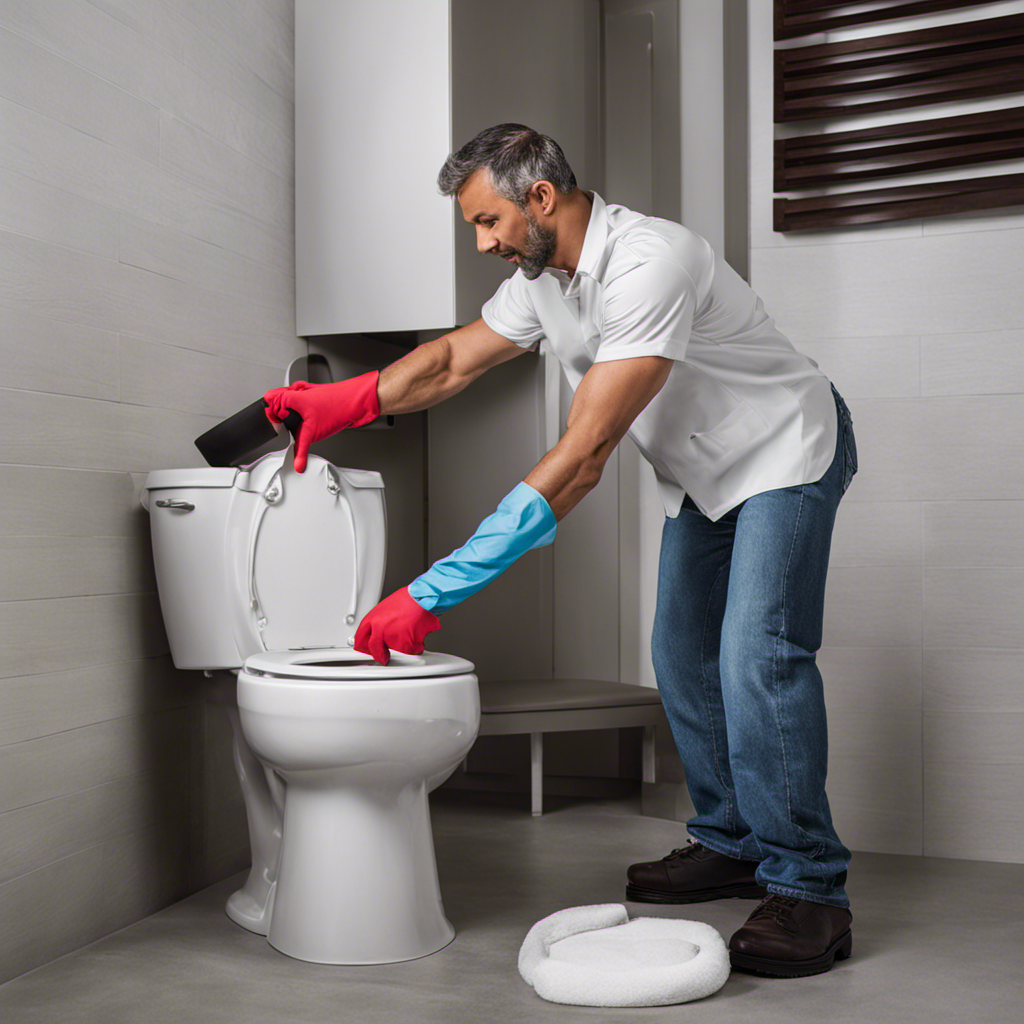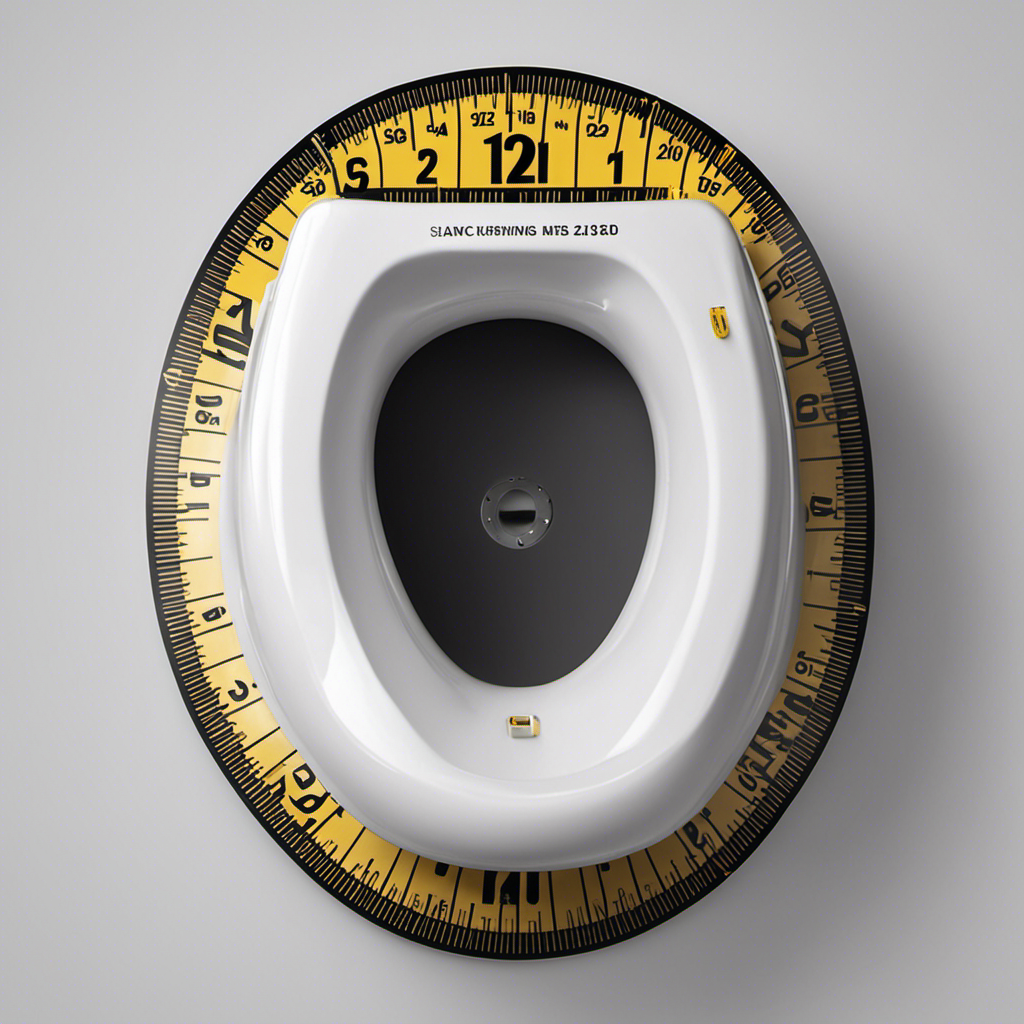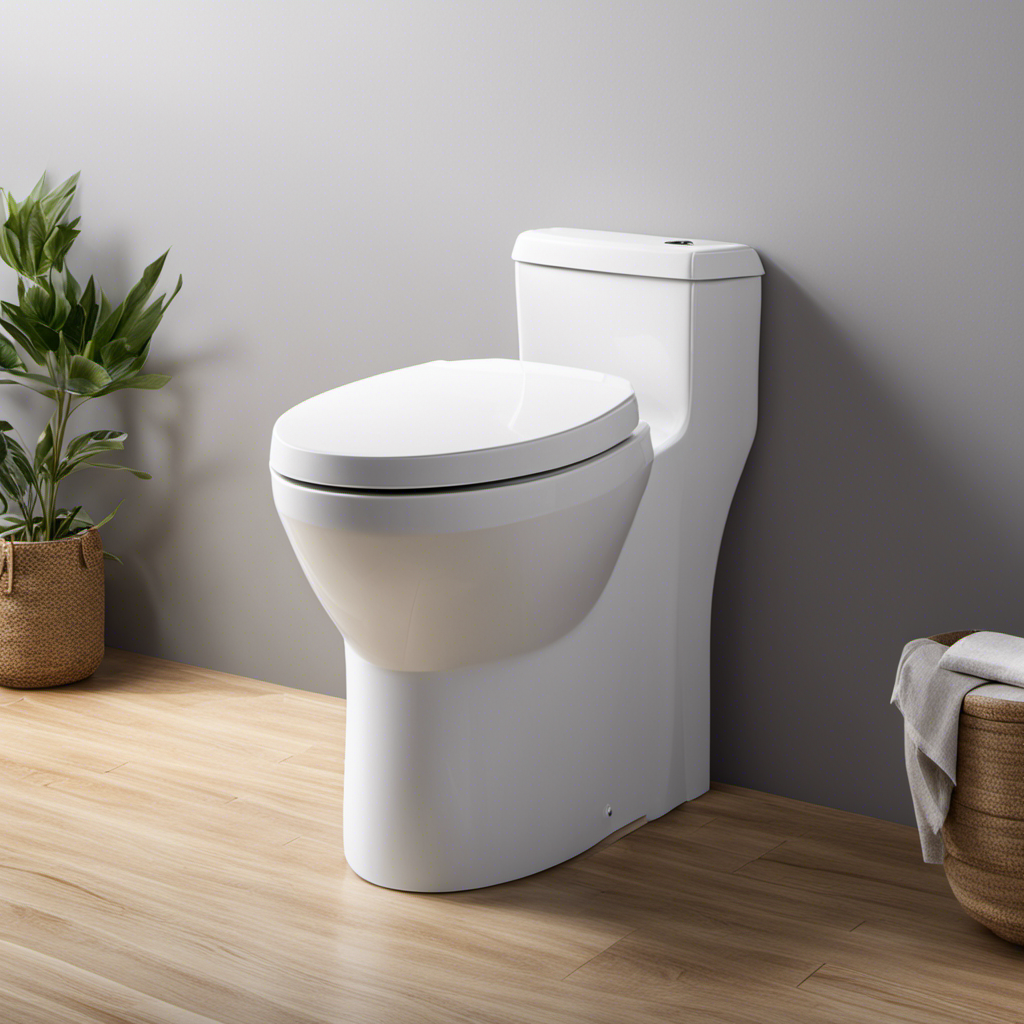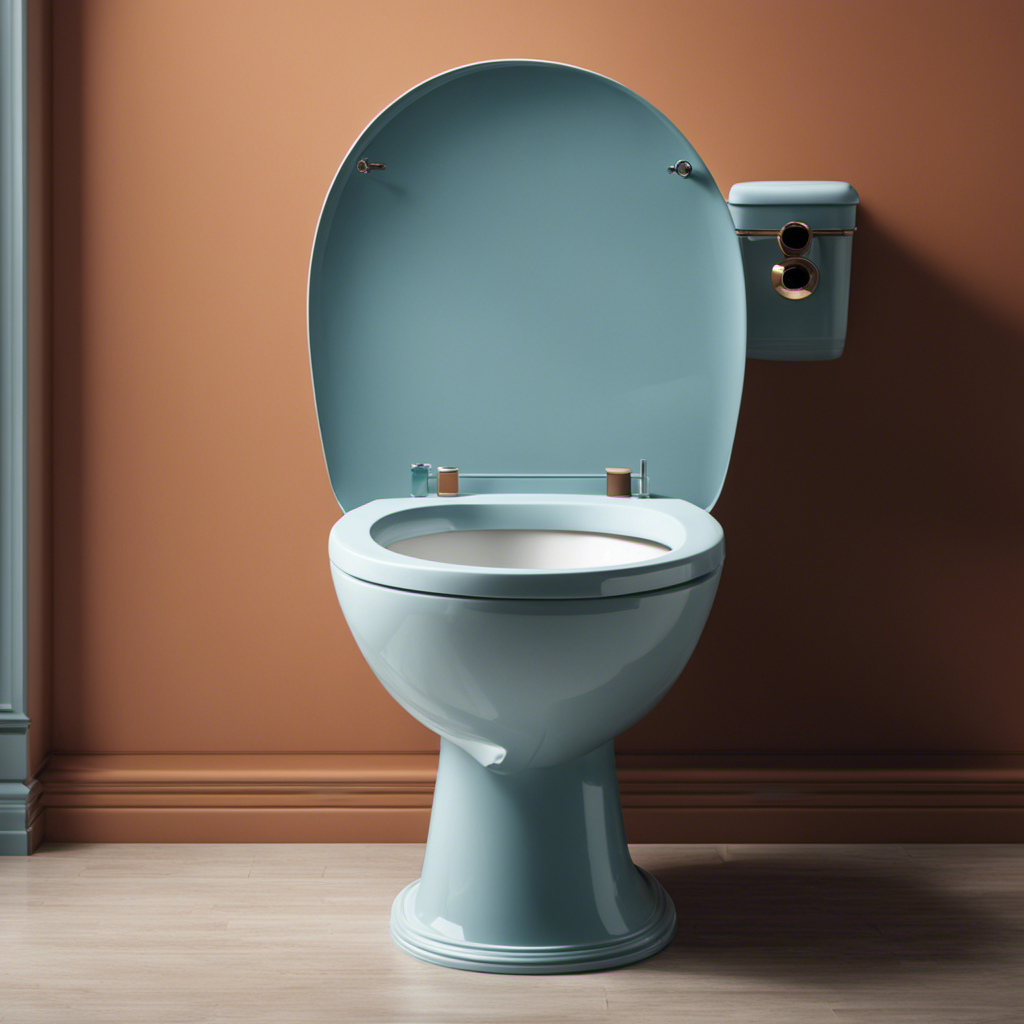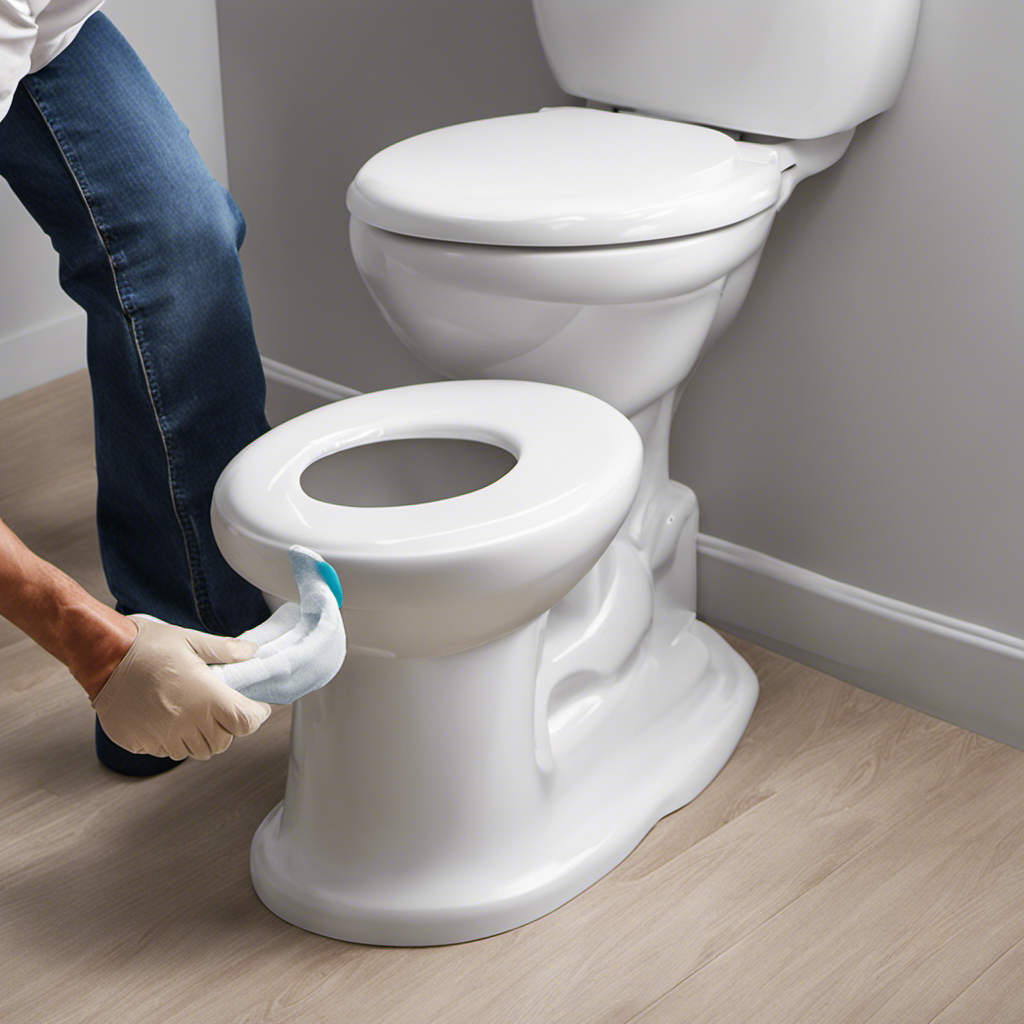Did you know that a running toilet can waste up to 200 gallons of water per day? That’s enough to fill a bathtub!
If you’re tired of the constant noise and sky-high water bills, don’t worry – I’ve got you covered. In this article, I will guide you through the step-by-step process of fixing a running toilet.
From identifying the cause to troubleshooting and repairing other possible issues, you’ll have your toilet working like new in no time.
Let’s get started!
Key Takeaways
- The flapper and fill valve should be checked to identify the cause of a running toilet.
- The water level in the toilet tank should be about an inch below the water level mark.
- The flapper valve should be inspected and replaced if damaged or worn.
- The fill valve should be cleaned or replaced if continuous water flow persists.
Identifying the Cause of Toilet Running
To identify the cause of a toilet running, you should first check the flapper and the fill valve.
Troubleshooting leaks is essential in determining the reason behind a constantly running toilet. Start by inspecting the flapper, which is located at the bottom of the tank. Ensure it is properly sealing the flush valve opening. If it is worn or damaged, it may need to be replaced.
Next, examine the fill valve, which is responsible for refilling the tank after a flush. If the valve is not shutting off completely, it can cause the toilet to continuously run. Adjusting the float mechanism can help fix this issue. Simply bend the rod or adjust the screw on the fill valve to lower the water level.
Checking and Adjusting the Water Level in the Toilet Tank
You can easily check and adjust the water level in the toilet tank. This is an important step in fixing a running toilet. To do this, remove the tank lid and look for the water level mark on the inside of the tank. The water level should be about an inch below the mark. If it is too high, it can cause the toilet to run continuously.
To adjust the water level, you can either adjust the float or replace the ballcock. The float is a small device that controls the water level in the tank. To adjust it, simply bend the float arm downwards to lower the water level, or upwards to raise it. If adjusting the float doesn’t solve the problem, you may need to replace the ballcock. The ballcock is responsible for regulating the flow of water into the tank. Follow the manufacturer’s instructions to replace it correctly.
To summarize:
| Step | Action |
|---|---|
| 1 | Remove the tank lid |
| 2 | Check the water level mark |
| 3 | Adjust the float or replace the ballcock |
Inspecting and Replacing the Flapper Valve
Inspecting the flapper valve is an important step in maintaining the efficiency of your toilet.
The flapper valve is a crucial component that controls the flow of water from the tank to the bowl. Over time, the flapper valve can deteriorate or become misaligned, leading to common toilet problems such as continuous running or incomplete flushing.
To inspect the flapper valve, start by turning off the water supply and removing the tank lid. Look for any signs of wear, such as cracks or buildup of mineral deposits.
If necessary, adjust the flapper valve by tightening or loosening the chain connected to it. If the flapper valve is damaged or worn, it may need to be replaced.
Cleaning or Replacing the Fill Valve
If the fill valve is dirty or malfunctioning, it can cause water to continuously flow into the toilet tank. To fix this issue, there are a few steps you can take.
First, you can try cleaning the fill valve to remove any dirt or debris that may be causing the problem. This can be done by shutting off the water supply to the toilet, removing the fill valve cap, and then cleaning the valve with a soft brush or cloth.
If cleaning doesn’t solve the issue, you may need to replace the fill valve altogether. This involves shutting off the water supply, removing the old valve, and installing a new one.
Additionally, adjusting the float and replacing any worn-out seals can also help resolve the problem.
By following these steps, you can ensure that your toilet stops running and water usage is minimized.
Now let’s move on to troubleshooting and repairing other possible issues.
Troubleshooting and Repairing Other Possible Issues
To troubleshoot and repair other possible issues with your toilet, start by checking the flapper valve for any signs of wear or damage. If the flapper valve is not sealing properly, it can cause water to continuously leak into the bowl, resulting in a running toilet. If the flapper valve is worn out or damaged, it will need to be replaced.
Another common issue that can cause a running toilet is a faulty overflow tube. The overflow tube is responsible for preventing the water in the tank from overflowing. If the tube is cracked or broken, it may need to be replaced.
Troubleshooting leaks and replacing the overflow tube are important steps in fixing a running toilet and restoring its proper functionality.
Frequently Asked Questions
How Much Does It Cost to Fix a Running Toilet?
Fixing a running toilet can vary in cost depending on the underlying issue. Common reasons for a running toilet include a faulty flapper valve or a broken fill valve. Expenses for toilet repair can range from $50 to $200.
Can a Running Toilet Waste a Lot of Water?
A running toilet can waste a lot of water, like a leaky faucet that drips incessantly. This not only harms the environment but also leads to higher water bills. Water conservation is crucial to reduce the environmental impact.
Is It Necessary to Replace the Entire Toilet if It Keeps Running?
No, it’s not necessary to replace the entire toilet if it keeps running. There are various toilet repair options available to fix common toilet problems such as a running toilet.
Can a Running Toilet Cause Damage to the Bathroom Floor?
A running toilet can cause damage to the bathroom floor if left unchecked. Signs of a leaking toilet include water pooling around the base and a continuous running sound. It’s best to call for toilet repair services to avoid further damage.
How Long Does It Typically Take to Fix a Running Toilet?
Fixing a running toilet can be a quick and easy task. On average, it takes about 20 minutes. However, the cost of repair varies depending on the common causes, such as a faulty flapper or fill valve.
Conclusion
In conclusion, fixing a running toilet is a simple task that anyone can do. By identifying the cause of the problem, checking and adjusting the water level, inspecting and replacing the flapper valve, and cleaning or replacing the fill valve, you can easily put an end to the constant running.
Just like a well-oiled machine, a properly functioning toilet ensures a smooth and efficient operation of our daily lives. So, don’t let a running toilet drain your patience, tackle the issue head-on and enjoy a leak-free bathroom experience.

